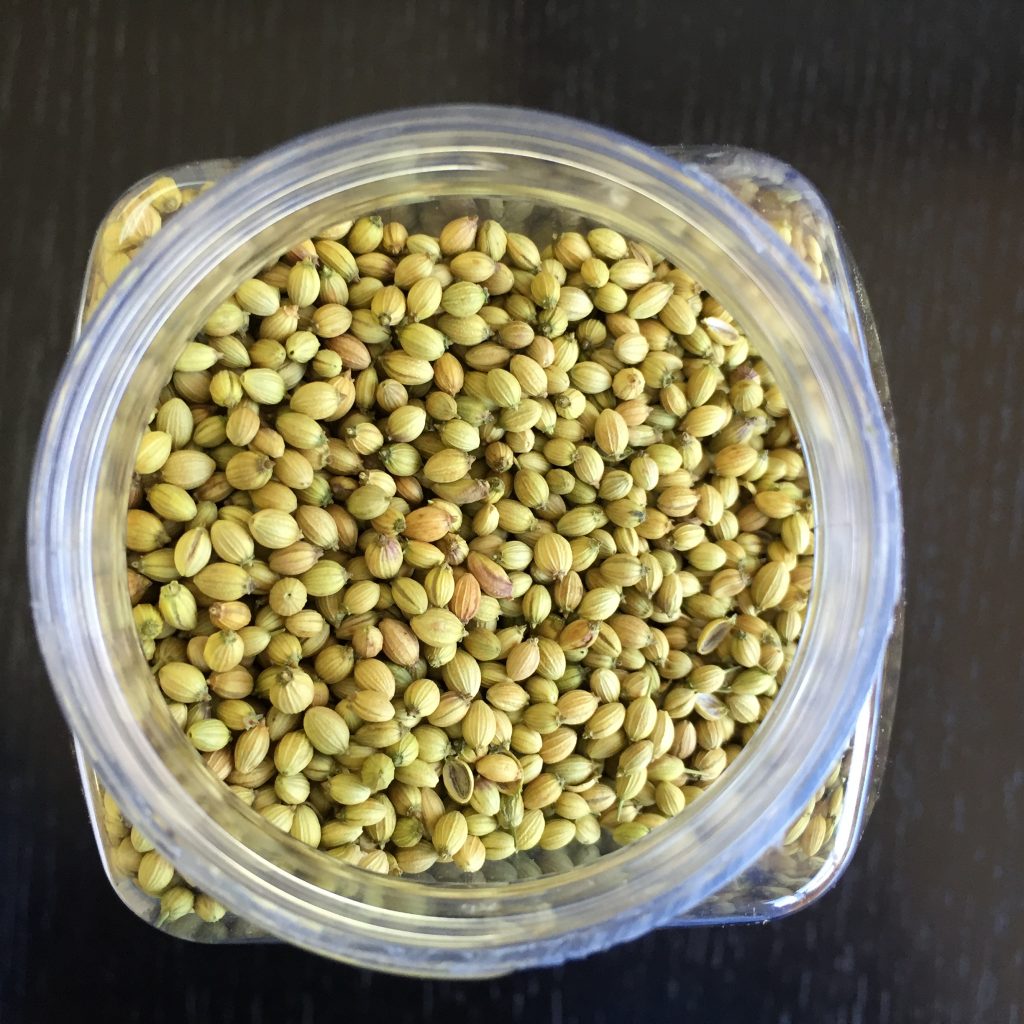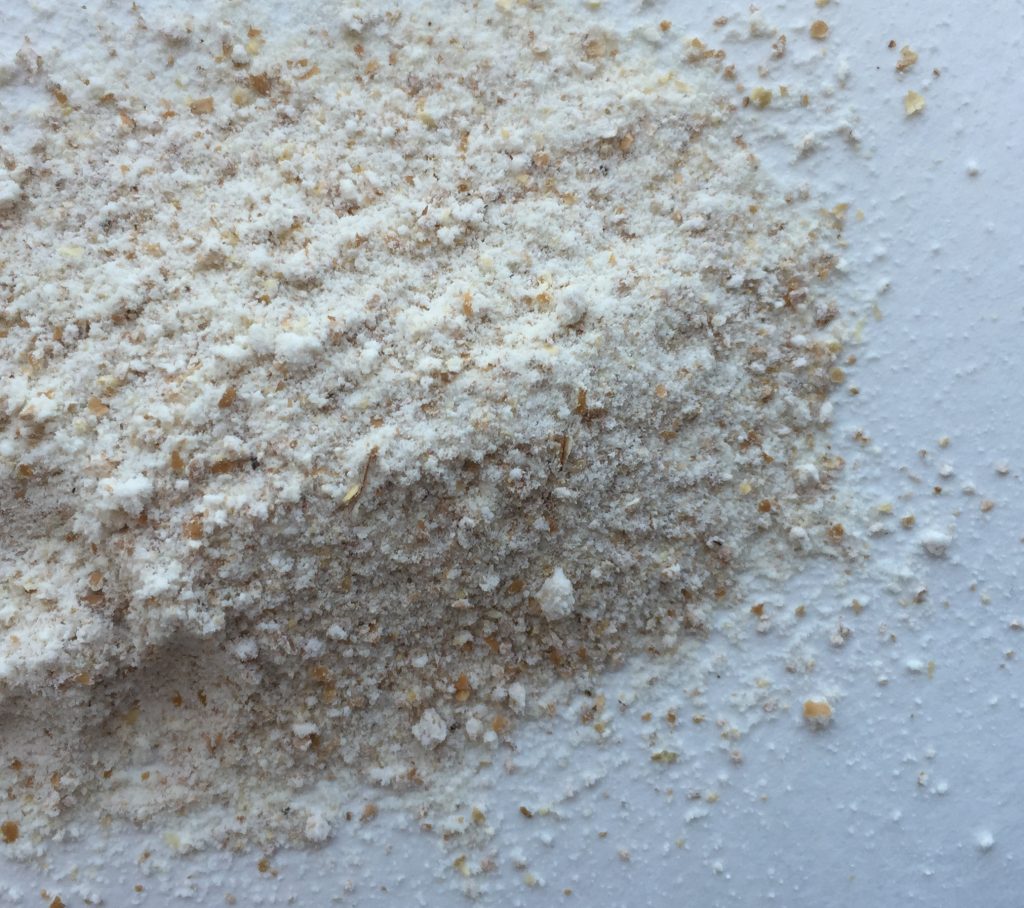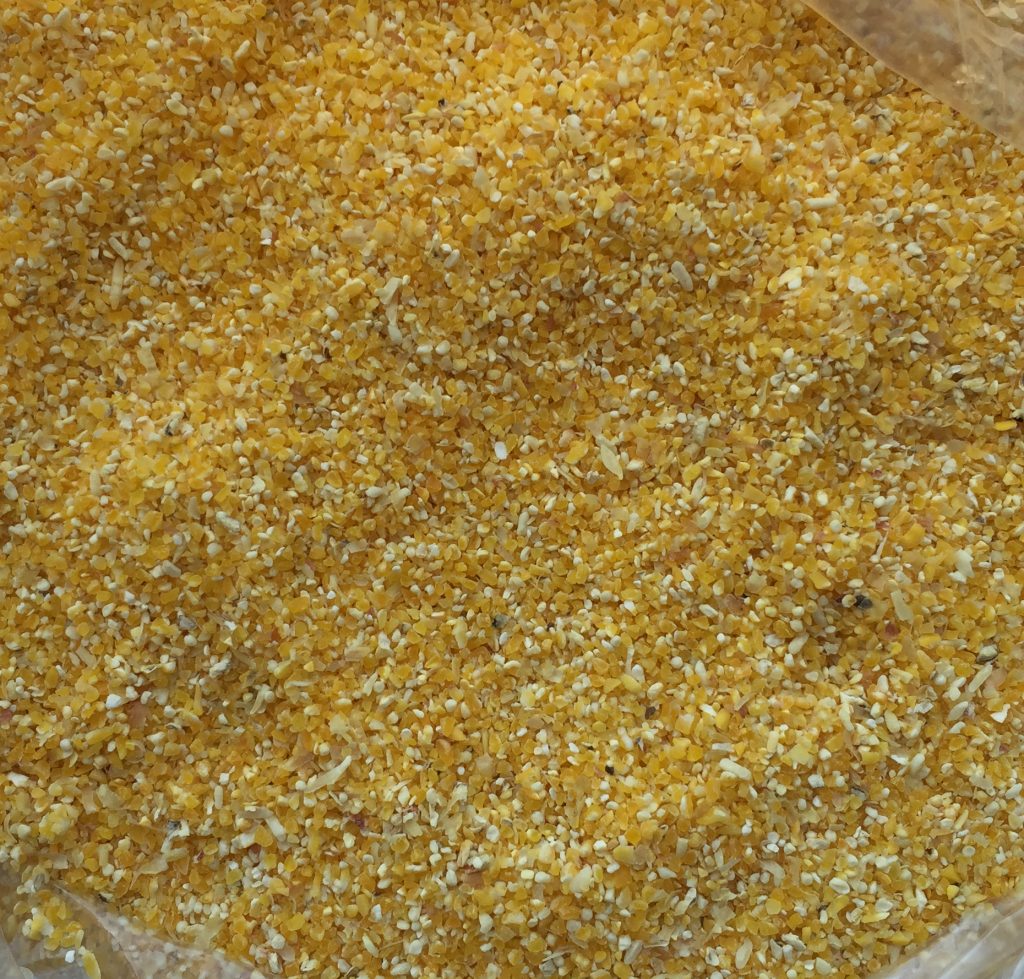I know once people get connected to real food, they never change back.
-Alice Waters
photo: Pencil Cob Corn, coming October 2016
What color are your coriander seeds? The thing that sparked my recent hyper-focus on the age of the dried goods was the color of the dried coriander we carry. After years in the kitchen, ordering spices through whatever dry goods company a given restaurant was using at the time, I was shocked to see a jar of coriander seed such a bright green-gold. Most of what I had seen in the past had only slightly more tint than a white peppercorn.
Sourcing matters just as much in dry goods as it does in produce. With produce, it’s fairly obvious if something is getting tired. With dry goods, age is not as obvious. Where is the product coming from? When was it harvested? What variety is it? These considerations, along with how it’s treated in transit–storage, handling–all make a big difference in the end product. You really have to feel, taste and smell the raw product.
Our Coriander Seed, Extra Bold
Why do you want freshly ground coffee? Another surprising thing was learning about how industrial white flour is made. In particular, industrial varieties of wheat have to be able to withstand the intense pressure and heat of steel-roller mills. The process cooks and strips the wheat to the point that it is very shelf-stable for a very long time. It also means that any ephemeral qualities (aromas, oils) that one would associate with freshness and proper treatment are gone. I don’t know about you, but I’d rather have that flavor in my flour then blown out the venting shaft of a commercial flour mill.
At the no-barriers-to-entry end of the scale, Maine Grains makes an all-purpose flour that can be swapped for the AP you’re using now. Check it out, and see for yourself if the nutty aroma and more complex flavors from these locally grown heirloom-variety stone-ground flours make the switch worthwhile. Many of our chefs are also using flours made from spelt, buckwheat and rye to make whole-grain pastas and breads. Bakers who follow Tartine are taking the 86% “high extraction” Magog wheat flour. We have all of the above in 5# bags, and we also have most of these items in “whole berry” format, for those of you doing your own grinding or looking for an interesting local alternative to farro. Any of it can be obtained in more economically advantageous 50# bags, with a week’s notice, or stocked for you–call and ask for Alison.
“Red Fife” heritage whole-grain flour, Maine Grains
What variety of corn is are your grits made from? Besides the Carolina white grits and red flint “Floriani” grits, we just brought in a shipment of “Lowman Yellow” grits. While some folks think of grits as being primarily white, yellow is the preferred variety when you get inland, away from the coast. The farm we work with is in central South Carolina, and yellow grits are the typical local favorite. Their true corn flavor pairs remarkably well with tomatoes and sweet corn. This is a great one to use right now, while those items are in season.


